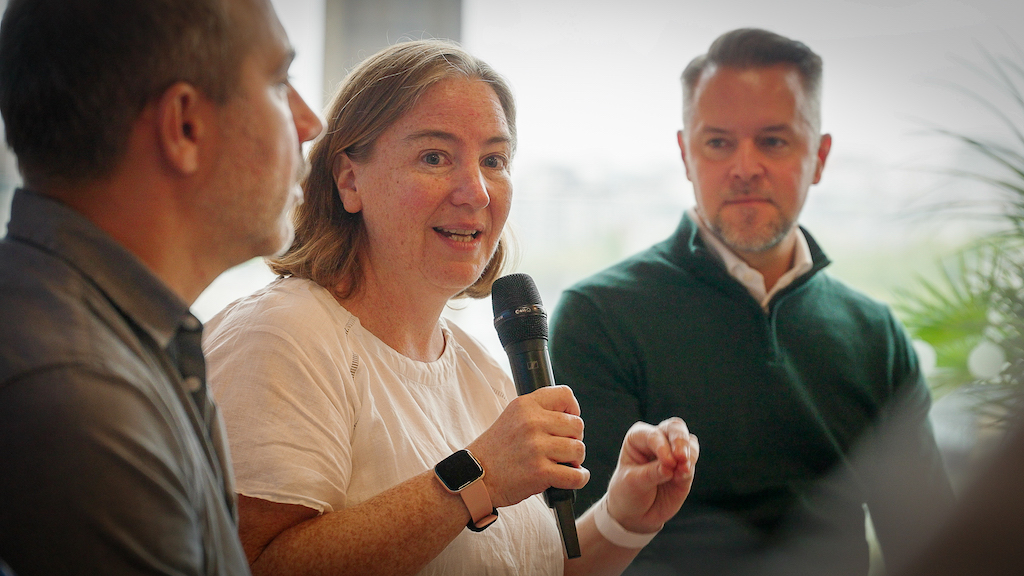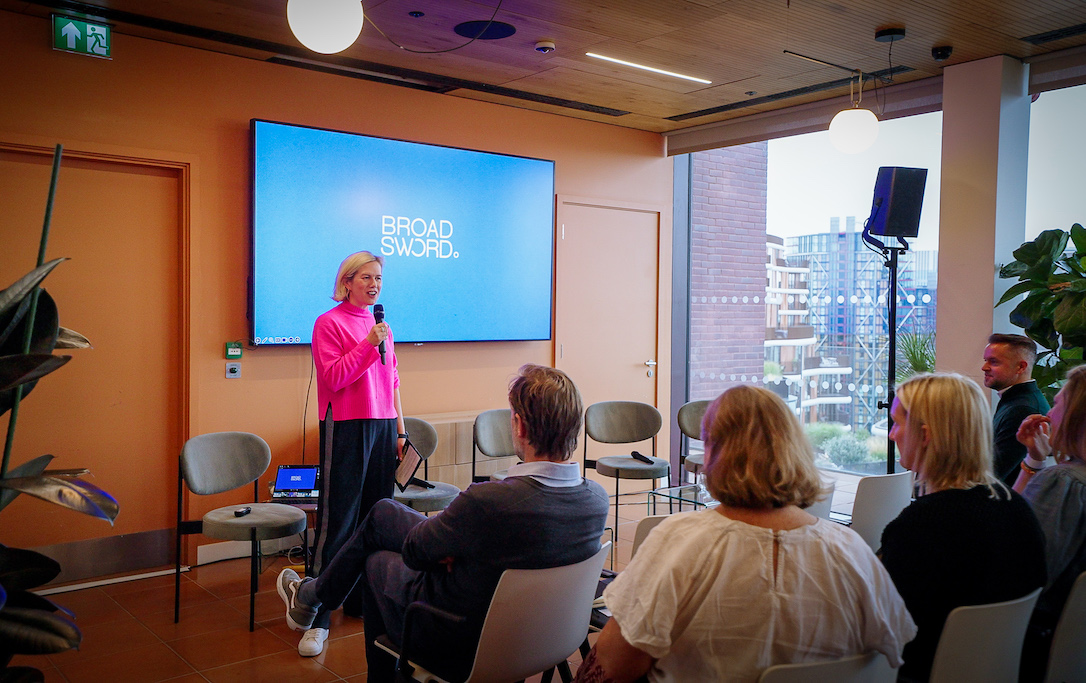“What does it really take to engage and lead people through constant change?” That was the question at the heart of Broadsword’s latest B Inspired event, hosted in partnership with internal communications specialists Something Big.
With Gallup estimating disengagement is costing the global economy more than $400 billion a year, the event brought together leaders from across communications, leadership, and learning to explore the new dynamics of workplace engagement. Here’s some of the key takeaways.
The Context: Five Generations, One Workplace
Author and generational expert Chloe Combi opened with a keynote on the new era of multi-generational workforces, with five generations now working side by side for the first time in history.

Rather than the “culture clash” narrative often painted between so-called snowflake Gen Zs and boomer traditionalists, Combi called this convergence a huge opportunity: “All those different skills and perspectives in one workplace is fantastic. It’s just about how we maximise them.”
She challenged myths around young workers, including the idea that all Gen Z want to work from home. In fact, many crave office culture and mentorship; what matters most is what happens when they’re there. Combi also reminded senior teams to model what you ask for: “If you want presence and connection, be visible. If you say cameras on, turn yours on first.”
From Broadcasts to Conversations
The panel, hosted by Broadsword’s Diane Carter, featured Sally Pritchett, CEO, Something Big; Paul Haynes, Global Graduate Development Manager, HSBC; Charlie Walker-Wise, Services Director, RADA Business; and Misty Oosthuizen, Head of Transformation Communications, dnata Catering UK. Each agreed that the future of internal communication lies in moving from telling to talking.

“Internal comms must stop just telling and start having dialogue. It’s time,” said Pritchett. She used the recent M&S Boxing Day example to illustrate the risks of skipping conversation – when internal issues spill into the public domain because employees weren’t part of the story.
Her advice for large organisations: “Use your employee forums, ERGs, and networks. They’re your focus groups. If you can’t speak to everyone, speak to someone who represents them.”
The Power of Story
For RADA Business’s Charlie Walker-Wise, leadership through change means more than having a clear strategy. It’s about moving people emotionally.
“When we talk about story, we’re talking about connection. The ability to move someone from point A to point B and to change how they think or feel, that’s what drives behaviour.”
He shared an example of working with Broadsword on a verbatim theatre experience, transforming employee feedback into a live performance for senior leaders.
Instead of another survey report, leaders heard their people’s words spoken on stage by actors When you hear it performed, it’s undeniable. It stops being data and starts being real.”
Learning Through Experience
Paul Haynes shared how HSBC is reshaping early talent programmes to meet the expectations of impatient, purpose-driven Gen Z. “Graduates want to know, from day one, ‘What’s the next step?’”
Partnering with Broadsword, his team launched an International Innovation Project, a global virtual challenge culminating in a live finale where graduates presented to senior leaders as digital avatars.
It wasn’t just a fun experiment, it built confidence, collaboration, and creative problem-solving. They became directors, designers, and storytellers – learning by doing.”
Culture and Belonging: Meeting People Where They Are
For Misty Oosthuizen, the concept of belonging needs more than good intentions. “Belonging is built intentionally by inclusion done well. You can’t say ‘bring your whole self to work’ and then berate people for being themselves.”
She urged leaders to move from assumption to understanding, creating personas based on real people rather than demographics.
“It’s not about authenticity, it’s about credibility. Know your people and what they need and value, then design communication that feels like it was written for them.”
Psychological safety, empathy, and attention to the small details all contribute to cultures where people can truly thrive.
The Future of Engagement
The event closed with a clear message for 2026 and beyond: Leadership is no longer about having all the answers. It’s about creating space for honest conversation.
As Pritchett summed up: “Healthy workplaces aren’t created by chance. They’re built through dialogue, trust, and a genuine desire to make work mean something.”

